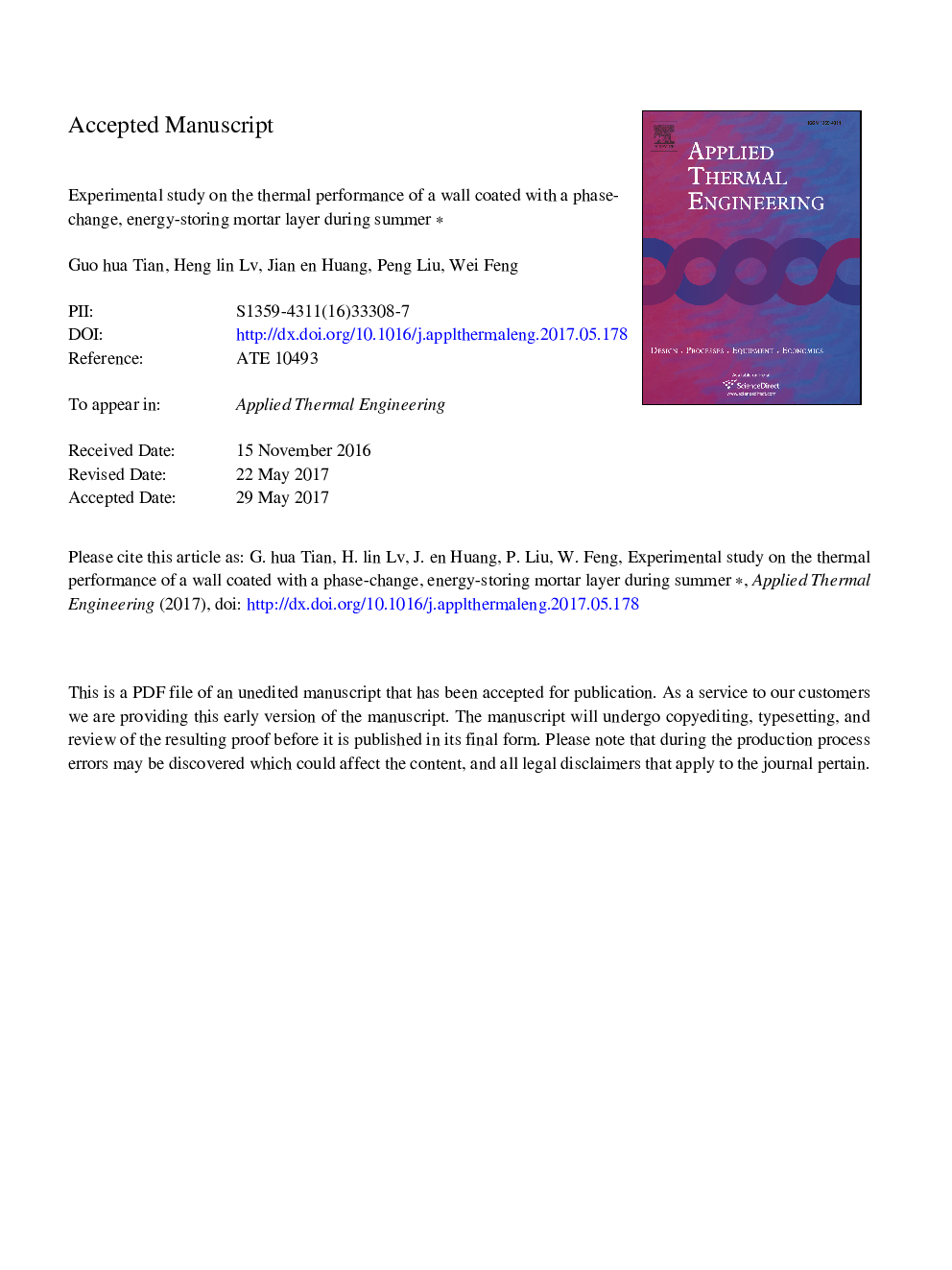| Article ID | Journal | Published Year | Pages | File Type |
|---|---|---|---|---|
| 4990613 | Applied Thermal Engineering | 2017 | 22 Pages |
Abstract
To study the heat transfer performance of walls coated with a phase-change, energy-storing material, test equipment was developed in-house, and a comparison test to characterize the heat transfer performance of the walls was conducted. In this study, the performances of a wall coated with a layer of mortar that is mixed with 50% phase-change, energy-storing ceramsite and that of an ordinary mortar-coated wall are tested and compared. The results show that under identical test conditions, compared with that of the ordinary wall, the temperature attenuation coefficient decreases by 50%; the temperature delay time doubles; the temperature fluctuation on the inner wall surface reduces by 55%; The average heat transfer resistance of the phase-change, energy-storing wall is 2.04Â times the average heat transfer coefficient of an ordinary mortar-coated wall. Both the heat insulation and heat storage capabilities of the phase-change, energy-storing wall are superior to those of an ordinary wall. They can effectively reduce the indoor temperature fluctuation and the air conditioning load of buildings, improve the indoor thermal comfort during summer.
Related Topics
Physical Sciences and Engineering
Chemical Engineering
Fluid Flow and Transfer Processes
Authors
Guo hua Tian, Heng lin Lv, Jian en Huang, Peng Liu, Wei Feng,
